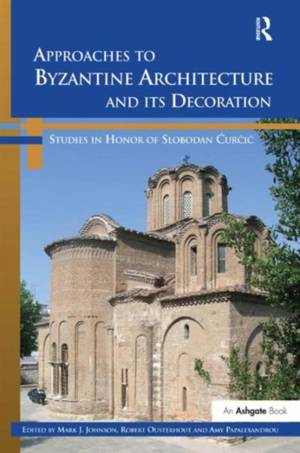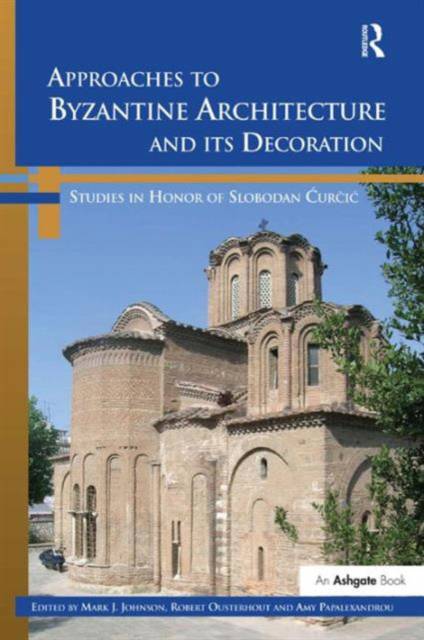
Door een staking bij bpost kan je online bestelling op dit moment iets langer onderweg zijn dan voorzien. Dringend iets nodig? Onze winkels ontvangen jou met open armen!
- Afhalen na 1 uur in een winkel met voorraad
- Gratis thuislevering in België vanaf € 30
- Ruim aanbod met 7 miljoen producten
Door een staking bij bpost kan je online bestelling op dit moment iets langer onderweg zijn dan voorzien. Dringend iets nodig? Onze winkels ontvangen jou met open armen!
- Afhalen na 1 uur in een winkel met voorraad
- Gratis thuislevering in België vanaf € 30
- Ruim aanbod met 7 miljoen producten
Zoeken
Approaches to Byzantine Architecture and Its Decoration
Studies in Honor of Slobodan Curcic
Mark J Johnson, Amy Papalexandrou
Hardcover | Engels
€ 305,45
+ 610 punten
Uitvoering
Omschrijving
The fourteen essays in this collection demonstrate a wide variety of approaches to the study of Byzantine architecture and its decoration, a reflection of both newer trends and traditional scholarship in the field. The variety is also a reflection of Professor Curcic's wide interests, which he shares with his students. These include the analysis of recent archaeological discoveries; recovery of lost monuments through archival research and onsite examination of material remains; reconsidering traditional typological approaches often ignored in current scholarship; fresh interpretations of architectural features and designs; contextualization of monuments within the landscape; tracing historiographic trends; and mining neglected written sources for motives of patronage. The papers also range broadly in terms of chronology and geography, from the Early Christian through the post-Byzantine period and from Italy to Armenia. Three papers examine Early Christian monuments, and of these two expand the inquiry into their architectural afterlives. Others discuss later monuments in Byzantine territory and monuments in territories related to Byzantium such as Serbia, Armenia, and Norman Italy. No Orthodox church being complete without interior decoration, two papers discuss issues connected to frescoes in late medieval Balkan churches. Finally, one study investigates the continued influence of Byzantine palace architecture long after the fall of Constantinople.
Specificaties
Betrokkenen
- Auteur(s):
- Uitgeverij:
Inhoud
- Aantal bladzijden:
- 330
- Taal:
- Engels
Eigenschappen
- Productcode (EAN):
- 9781409427407
- Verschijningsdatum:
- 28/01/2012
- Uitvoering:
- Hardcover
- Formaat:
- Genaaid
- Afmetingen:
- 156 mm x 234 mm
- Gewicht:
- 644 g

Alleen bij Standaard Boekhandel
+ 610 punten op je klantenkaart van Standaard Boekhandel
Beoordelingen
We publiceren alleen reviews die voldoen aan de voorwaarden voor reviews. Bekijk onze voorwaarden voor reviews.











